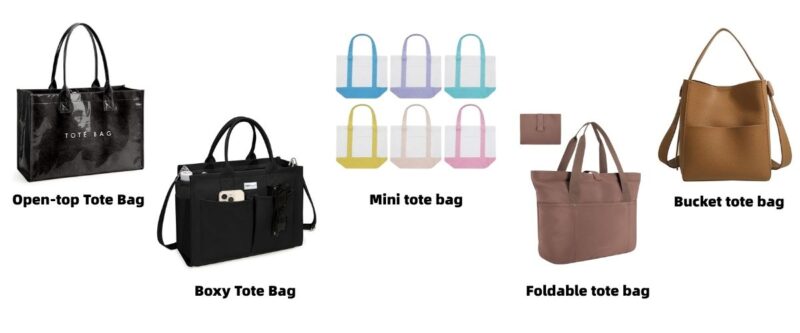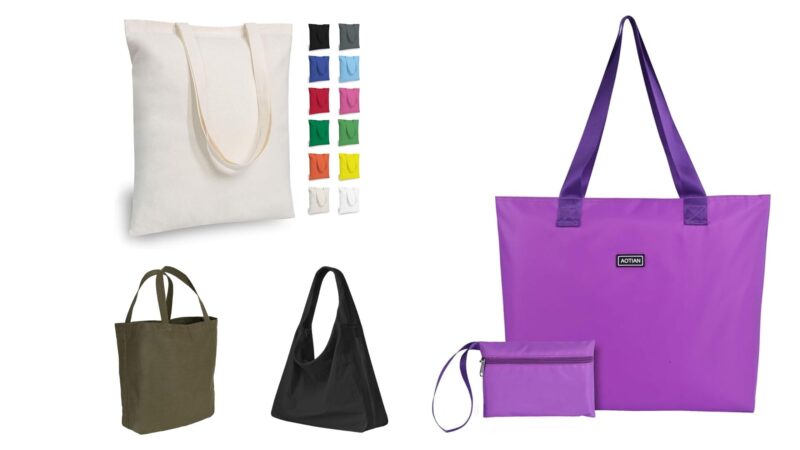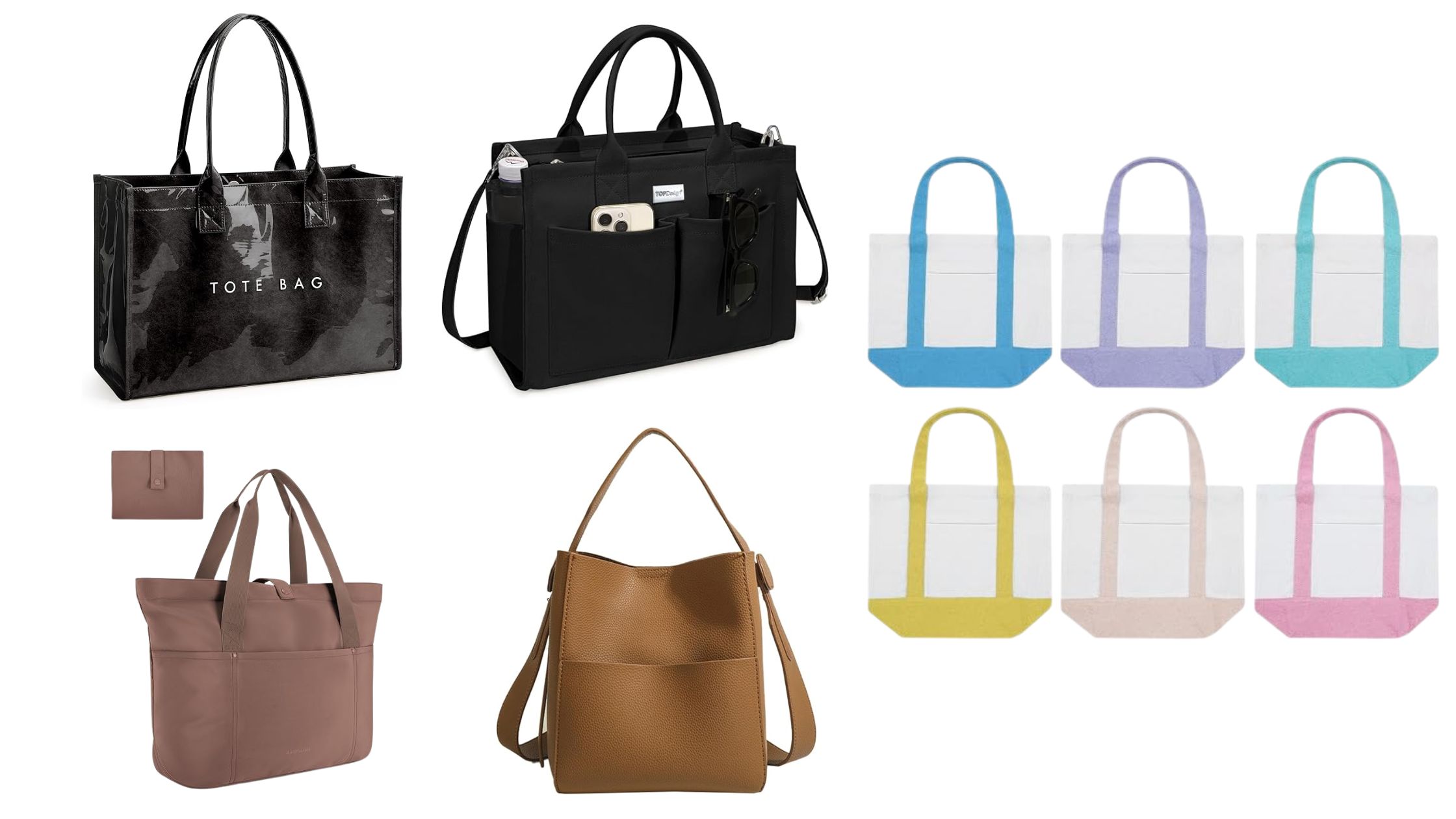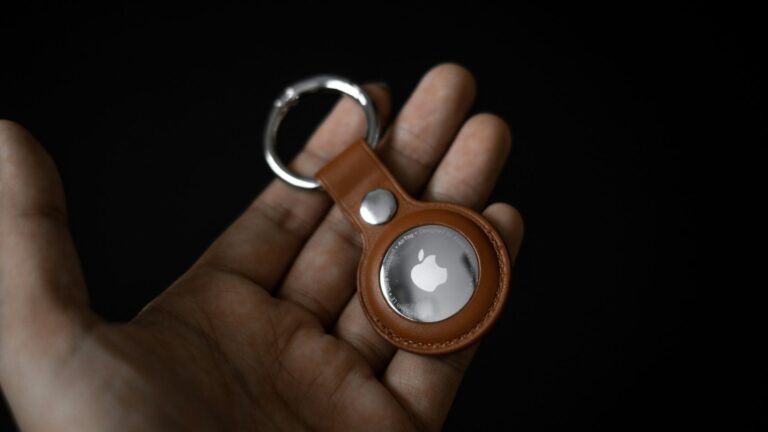A Complete Buyer’s Guide to Tote Bags: Types, Materials, Sizes
Tote bags, as the most frequent bag in daily life, are widely used in both professional and personal situations. But do you know what materials they are made of? Which sizes are available? What is their historical background? How are they different from other sorts of bags? Continue reading this site to have a deeper grasp about tote bags.
1. What is a Tote Bag?
A tote bag is a sturdy bag with two parallel handles and a sizable capacity. It is a necessary item for both daily life and work because of its open-top design, which blends fashion and functionality.
2. Exploring Different Types of Tote Bags
Open-top Tote Bag: The most common design, its minimalist style complements any outfit. Items can be easily accessed without zippers or buttons.
Boxy Tote Bag: Reinforced sides and bottom maintain shape while increasing interior capacity for carrying more items.
Foldable tote bag: Can be folded and stored when not in use, saving space. Made from eco-friendly, durable materials, it’s reusable and reduces plastic bag consumption.
Mini tote bag: Compact and lightweight, designed to carry essentials like phones and wallets. Ideal for daily outings and shopping trips.
Bucket tote bag: Features a characteristic circular base and often has a large capacity. It is both fashionable and robust, with a variety of carrying alternatives.

3.What materials can be used to make tote bags?
Tote bags can be categorized by material into canvas totes, cotton totes, jute totes, polyester totes, leather totes, nylon totes, and recycled material totes. Below is an explanation and comparison of these common fabrics:
Algodón
Cotton is a multipurpose textile that is widely used to make towels, beds, clothes, and other items. Additionally, it’s a traditional and widely used material for tote bags. It is soft and breathable in addition to being biodegradable and environmentally friendly. It works well for transporting lighter objects and clothes.
Lienzo
Another common fabric for tote bags is canvas. It is woven from strong, long-lasting plain-weave cotton that is tightly structured. This material produces lightweight, thick bags. Canvas is very printable; you may print any pattern on it, and it won’t fade even after several washings. Perfect for heavy lifting and everyday use.
Poliéster
Waterproofing is polyester’s most distinctive feature. It offers low production costs and excellent durability due to its resistance to wear. However, it lacks breathability. As a petroleum-based material, prolonged use may pose potential health risks.
Nylon
Another synthetic fiber made from petroleum is nylon, which costs more than polyester. It has excellent waterproofing, tear resistance, and durability. It’s perfect for outdoor activities because it’s lightweight and portable.
Yute
Jute is a natural plant fiber extracted from its stems, making jute tote bags elastic and fully biodegradable—highly eco-friendly. Its coarse, rustic appearance and unique texture are popular. However, jute is difficult to clean, and its printed designs appear less sharp compared to other fabrics.
Leather
Real leather has a rich texture to the touch and a sophisticated, opulent appearance. It can survive five to ten years if properly cared for. Its natural rigidity keeps it from sagging under weight, keeping its shape, and it breathes quite well. It is best suited for clients with enough funds and time to take care of their tote bags because it is pricey, takes meticulous upkeep, and has significant maintenance costs.

4.Common Tote Bag Dimensions
- Tote bag dimensions typically include three measurements: height, width, and depth.
- Height refers to the distance from the top to the bottom of the bag, excluding the length of the handles or shoulder straps.
- Width is the length from one side of the base to the other—these two measurements are the primary dimensions.
- Depth refers to the length of the bag’s side, which determines the internal space.
Tote bags come in a variety of sizes to match everyone’s specific demands and goals, whether they’re for commuting to work, going to the beach, or grocery shopping.
For quick errands, opt for a small tote bag, typically measuring 8“W x 10”H x 4″D. These are perfect for carrying essentials like phones, wallets, and keys—easy to carry but offering limited space for additional items.
El medium tote bag is the most common and practical size. It offers ample capacity compared to the small tote while being less bulky than the large tote. Medium sizes generally range from 14“W x 16”H x 4“D to 15”W x 18“H x 5”D. This provides space for laptops, books, daily essentials, clothing, and more, making it perfect for work or everyday use.
Large tote bags generally measure 18“W x 20”H x 6″D, accommodating larger laptops, heavier office supplies, or bulky travel essentials. While spacious, they are less portable than medium or small totes.
If you require custom dimensions, please contact us for bespoke solutions.
5. What’s the difference between tote bags and other types of bags?
5.1 Tote Bag vs Shoulder Bag
Tote bags include two shoulder straps, an open shape, and plenty of inside room, making them great for transporting computers, books, documents, baggage, or clothing. Shoulder bags have only one strap and less inside room than totes, but typically contain several sections for arranging wallets, keys, and other belongings. When carrying larger items, the tote bag’s two wide straps distribute the weight equally, decreasing strain, whereas a shoulder bag’s single strap might be uncomfortable.
5.2 Tote Bag vs. Plastic Bag
Tote bags are made from durable materials like canvas or cotton, designed for repeated use. Plastic bags are more resilient but typically discarded after a single use. Tote bags offer greater variety in styles and materials with diverse designs, while plastic bags feature simpler, more uniform shapes.
5.3 Tote Bag vs. Purse
Tote bags are known for their large capacity and open style. Purses are often smaller in capacity than tote bags, have more secure closures, and contain more compartments. Purses promote convenience by holding only the basics and are best suited for formal gatherings or short travels. Note: Handbags and purses are sometimes confused. In the United States, “purse” often refers to a small, compact wallet or carryall with blurred distinctions from “handbag.” In the United Kingdom, the term ‘purse’ refers to a wallet for money and cards, whereas “handbag” refers to a tote for everyday necessities.
6. Why are tote bags great?
Ecológico: Reusable tote bags replace single-use plastic bags, reducing plastic pollution.
Durable: Made from materials like cotton, canvas, and jute, they offer abrasion resistance and high tensile strength.
Versatile: Whether shopping, commuting, heading to the gym, or just strolling around, a tote bag can hold everything you need.
Customizable: You can design and personalize them to suit your preferences.
7. What can you use a tote bag for?
- As promotional gifts to advertise your brand.
- As a shopping bag for groceries.
- As a beach bag for clothes, towels, sunglasses, and more.
- As a picnic bag for lunch and camping gear.
- As a travel bag for essentials.
- For gym workouts to carry water bottles, towels, and other items
8. The History of Tote Bags
Do you know where the tote bag came from, given how widespread it is in everyday life?
Maine was known in the 1940s for its abundance of high-quality ice. However, many American homes lacked refrigerators at the time. LL Bean invented an ice bag, which was a robust, waterproof canvas bag that predated the tote bag. LL Bean is largely regarded as the originator of the tote bag.
By the 1960s, totes had gained popularity. To rethink the tote, designers and producers experimented with a variety of materials and aspects, including leather handles, zippers, and printed patterns.
In the 1980s, a New York bookstore designed a tote bag featuring its own logo, setting an example for many brands. People began using tote bags to promote their brands. French luxury manufacturer Hermès launched its famous “Birkin bag” during this period, contributing significantly to the popularity of tote bags in the 1980s.

Preguntas frecuentes
- How do I customize a tote bag?
First, determine the tote bag’s purpose—can you use existing sizes or will you need to customize? If you want to customize the tote bag, choose the height, breadth, depth, and strap length. The strap length is the distance between one end and the other, which influences how the bag hangs and your comfort when carrying it. Next, select your fabric. Cotton is both comfortable and environmentally friendly. Canvas is an excellent choice for carrying larger goods. Share your specifications with us, and we’ll recommend appropriate dimensions and fabrics for creating your ideal tote bag. - What printing techniques are available for tote bags?
Common printing techniques include screen printing, digital printing, heat transfer printing, embroidery, all-over printing, and debossing. The decision is based on the complexity of your design and the expected lifetime. - How should tote bags be cleaned and maintained?
First, for detailed directions, consult the care label. The majority of tote bags can be tumble-dried or air-dried after hand washing. Special textiles, such as leather and jute, should only be spot cleaned; do not wash them. Clean containers used on a daily basis every few weeks. Cleaning a few times a year is adequate for infrequent use. - What does GSM mean?
The acronym GSM stands for Grams per Square Meter. Higher GSM levels suggest a thicker fabric. Small bags normally utilize 170-230gsm cloth, whereas medium and large sizes require 230-340gsm. Fabrics weighing between 340 and 450gsm are considered thick, strong, and highly durable.







